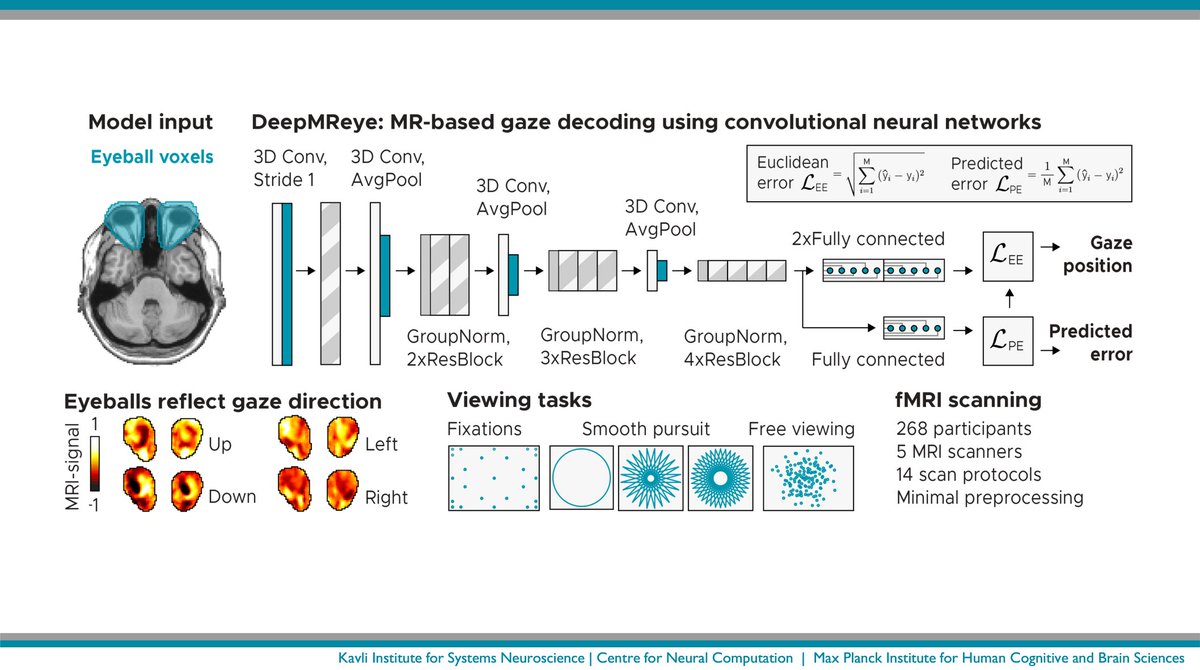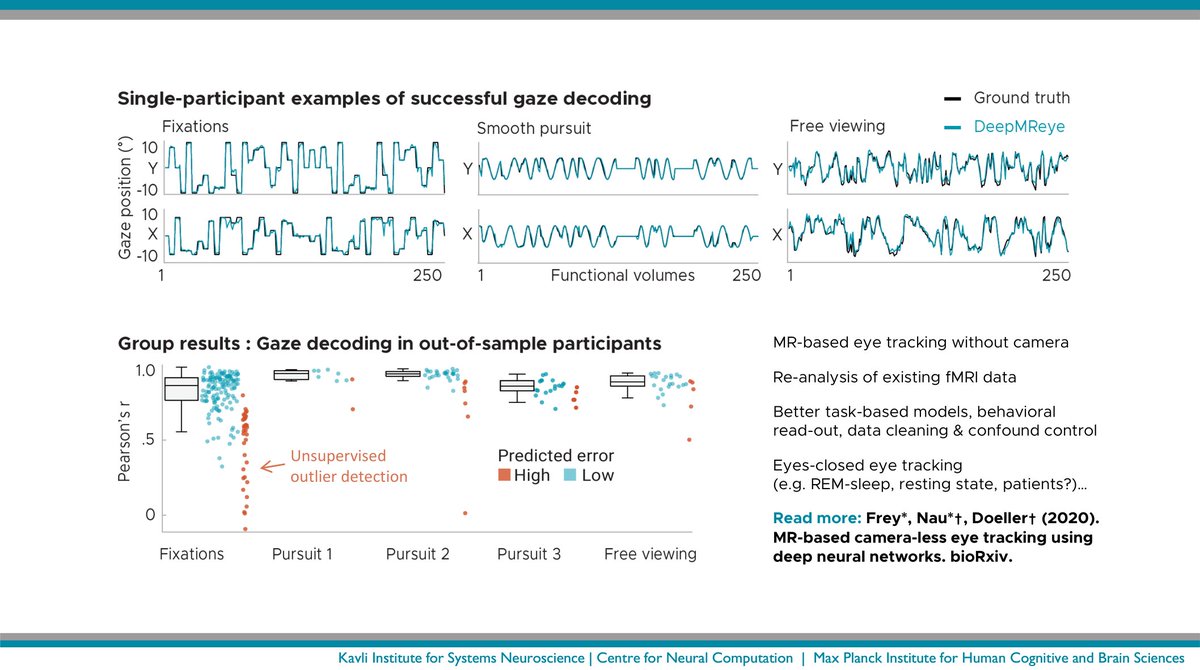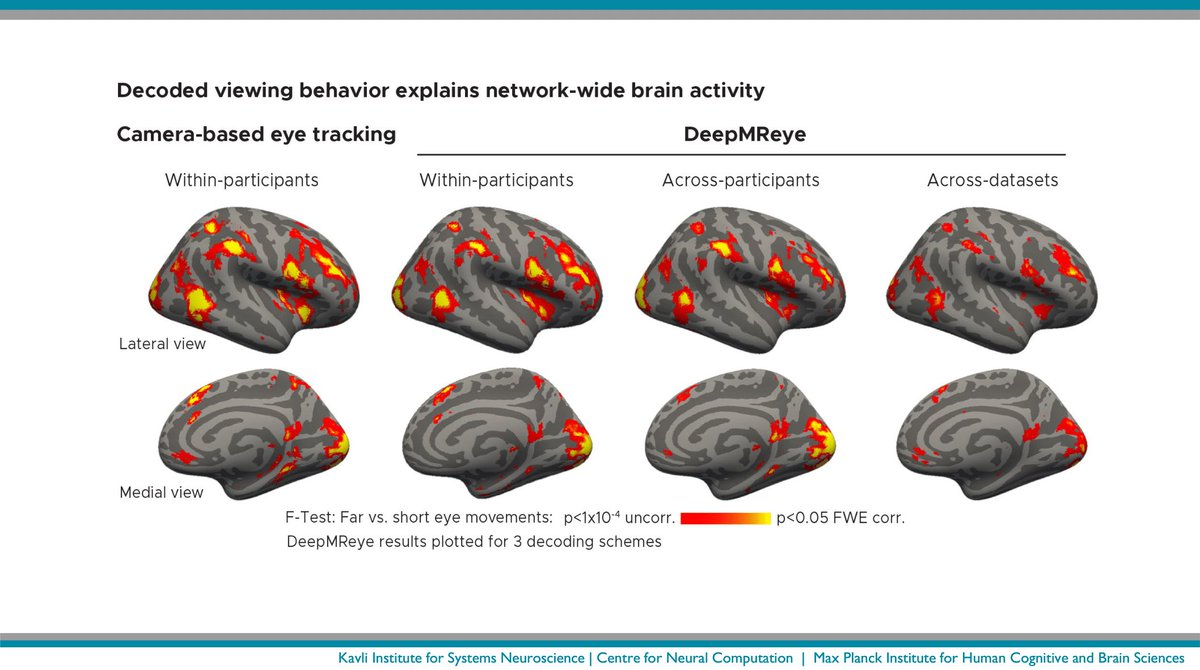Discover and read the best of Twitter Threads about #eyetracking
Most recents (6)
🎉New paper in @SciReports
👁️🖱️We created a digital version of a widely used neuropsychological test of #ExecutiveFunctions using hand and #eyetracking
Linari I., Juantorena G., Ibañez, Petroni A., Kamienkowski J.
go.nature.com/3L5acUa
🧵1/n
👁️🖱️We created a digital version of a widely used neuropsychological test of #ExecutiveFunctions using hand and #eyetracking
Linari I., Juantorena G., Ibañez, Petroni A., Kamienkowski J.
go.nature.com/3L5acUa
🧵1/n
🖥️We made a digital version of the #TrailMakingTest and recorded hand and eye movements
To perform an external validation of the cTMT measures, we administered an executive functions battery and a canonical visual working memory test
To perform an external validation of the cTMT measures, we administered an executive functions battery and a canonical visual working memory test

Like in the original TMT, participants performed two types of trials:
▶️ TMT-A: Connect numbers in ascending order.
▶️ TMT-B: Alternate between numbers and letters.
▶️ TMT-A: Connect numbers in ascending order.
▶️ TMT-B: Alternate between numbers and letters.
While preparing my #EyeTracking 👀Lectures, I learned a bunch of new #vision science things & updated my outdated knowledge.
If I got something wrong/incomplete, I'd be happy to know it before I tell my students ;-)
1/6
If I got something wrong/incomplete, I'd be happy to know it before I tell my students ;-)
1/6
I'll summarize our study on the privacy implications of eye tracking, which was widely shared & discussed online over the last weeks 🥳 Time for a thread. #eyetracking #privacy #dataprotection #machinelearning #AI #inferences 1/19 



Link to paper (open access): rd.springer.com/content/pdf/10…. In the paper, we present the results from sifting through a ton of literature and patents to answer one question: What categories of personal information can be inferred from eye-tracking (ET) data? 2/19
In short: recorded eye activity can reveal information about a user's sex, age, ethnicity, personality traits, drug-consumption habits, emotions, fears, skills, interests, sexual preferences, and physical and mental health. Details in the paper. Here are some examples: 3/19
Want to do #eyetracking in #fMRI without eye tracker? Check out our #preprint!
@CYHSM & I developed #DeepMReye, a #DeepLearning framework to decode gaze position from the MR-signal of the eyeballs. No camera needed! w/@doellerlab
biorxiv.org/content/10.110…
Thread below! 👇



@CYHSM & I developed #DeepMReye, a #DeepLearning framework to decode gaze position from the MR-signal of the eyeballs. No camera needed! w/@doellerlab
biorxiv.org/content/10.110…
Thread below! 👇




How does MR-based #eyetracking work?
The orientation of the eyeballs naturally reflects gaze direction. This & the strong MR-signal variations induced by eye movements serve as the basis for gaze decoding.
The orientation of the eyeballs naturally reflects gaze direction. This & the strong MR-signal variations induced by eye movements serve as the basis for gaze decoding.
What is #DeepMReye & what does it do?
It's a #CNN that uses the multi-voxel-pattern of the eyeballs to decode gaze position on the screen. It can perform #eyetracking even in existing #fMRI data.
We tested it on 268 participants scanned with 14 scan protocols on 5 MRI scanners!
It's a #CNN that uses the multi-voxel-pattern of the eyeballs to decode gaze position on the screen. It can perform #eyetracking even in existing #fMRI data.
We tested it on 268 participants scanned with 14 scan protocols on 5 MRI scanners!
Exciting new systematic #review on "#Eyetracking methodology in #mathematics #education research" by @tweetingamsel @kelseymack92 Andreas Obersteiner and @palabra2017 published #openaccess in "Educ Stud Math" doi.org/10.1007/s10649…
(2) The authors reviewed 161 eye-tracking studies published between 1921 and 2018 to assess what domains and topics were addressed, how the method was used, and how eye movements were related to mathematical thinking and learning
(3) If you ever wanted to get started with eye-tracking in mathematics education research, or are already involved in the field but desperately seek for an overview of the present literature: this is the study you were looking for!
Interested in #EyeTracking in Multimedia?
We will be hosting an online workshop on 2 June 2020. See thread for presentations. Thread for presentation and link to register (1/n):
eventbrite.com/e/workshop-for…
We will be hosting an online workshop on 2 June 2020. See thread for presentations. Thread for presentation and link to register (1/n):
eventbrite.com/e/workshop-for…
Our keynote speaker @tsawallis will speak on "Predicting eye movements in images and video: Recent progress and future challenges.".
He will review advances in probabilistic models that predict observer gaze from visual content & their limitations. 2/n
scholar.google.com/citations?user…
He will review advances in probabilistic models that predict observer gaze from visual content & their limitations. 2/n
scholar.google.com/citations?user…
Next, Sharath Koorathota will speak on how pupil diameter could be predicted while students watch educational videos in order to discriminate between influences related to luminance and accommodation, from cognition and arousal. 3/n
dl.acm.org/doi/abs/10.114…
dl.acm.org/doi/abs/10.114…



